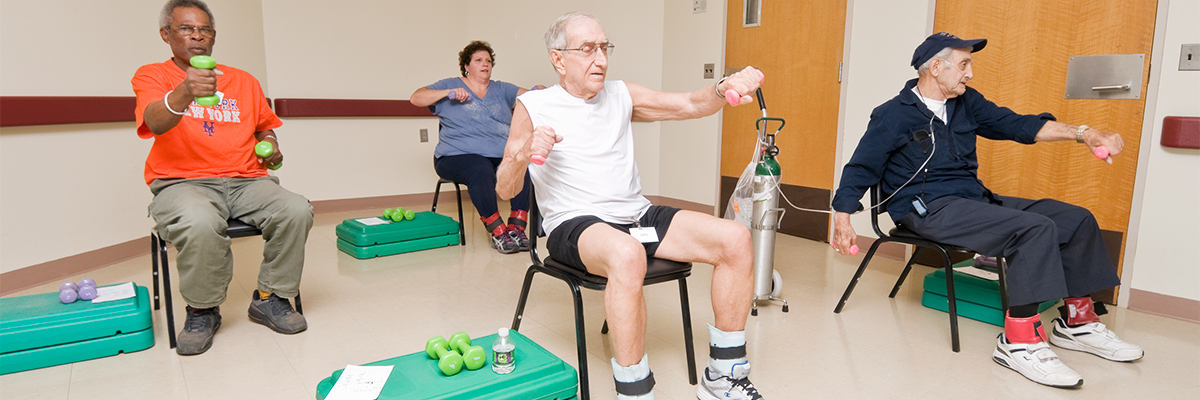
The path of living with a chronic respiratory condition, such as Chronic Obstructive Pulmonary Disease (), interstitial lung disease, or pulmonary hypertension, is often marked by a progressive, insidious decline in physical capacity. This decline is not solely attributable to the worsening state of the lungs but is significantly compounded by a cycle of deconditioning: breathlessness leads to reduced activity, which, in turn, causes muscle atrophy and further breathlessness upon exertion. It is a highly specific, medically supervised intervention designed to break this self-perpetuating cycle that offers a proven, non-pharmacological route to reclaim functional capacity and enhance overall quality of life. Pulmonary rehabilitation (
) is more than just exercise; it is a holistic, multidisciplinary program that targets the complex physiological, psychological, and behavioral aspects of chronic lung disease. It fundamentally aims to empower the individual to understand and manage their condition effectively, restoring a level of independence that the disease has systematically eroded. The structure of a
program is deliberately multifaceted, recognizing that improvements in lung function alone are often insufficient to address the patient’s entire symptom burden, which includes severe dyspnea, overwhelming fatigue, and high levels of anxiety and depression.
Comprehensive Patient Assessment Prior to Program Entry
The foundation of a successful experience is a thorough and highly individualized initial assessment, which moves far beyond a simple review of lung function tests. This mandatory evaluation is conducted by a multidisciplinary team, typically involving a respiratory therapist, an exercise physiologist, a nurse, and sometimes a physician or psychologist. The assessment’s primary goal is to establish a detailed baseline of the patient’s functional status, symptom severity, and overall health profile, ensuring that the subsequent program can be tailored specifically to their needs and limitations. This involves objective measurements such as the Six-Minute Walk Test (
) or the Incremental Shuttle Walk Test (
), which provide a quantifiable measure of exercise capacity and endurance. These field tests are critical because resting pulmonary function tests, such as
(Forced Expiratory Volume in one second), often poorly correlate with the patient’s real-world ability to perform daily activities.
“…a thorough and highly individualized initial assessment, which moves far beyond a simple review of lung function tests.”
Furthermore, the initial evaluation delves into non-pulmonary issues that profoundly affect participation and outcomes. This includes screening for nutritional deficits, as many patients with advanced lung disease are either significantly underweight or, conversely, obese, both of which complicate breathing mechanics and exercise tolerance. Psychological status is also rigorously assessed, using tools to detect and quantify symptoms of anxiety and depression, which are highly prevalent in this patient population and can severely undermine motivation and adherence. A final, crucial part of the assessment is a thorough review of the patient’s comorbidities—other health conditions like cardiovascular disease or musculoskeletal disorders—which require careful consideration when formulating a safe and effective exercise prescription. The data collected from this initial phase directly shapes the patient’s individual goals, guiding the frequency and intensity of their ensuing training program, rather than forcing them into a standardized, one-size-fits-all regimen.
Exercise Training: The Central Pillar of Reconditioning
The most visible and perhaps most critical component of any pulmonary rehabilitation curriculum is the supervised exercise training. This is not casual physical activity; it is a structured, progressive regimen designed to improve the strength and endurance of peripheral and respiratory muscles, with the ultimate, somewhat counterintuitive goal of reducing the sensation of breathlessness. Patients are typically involved in sessions two to three times per week for a period that generally spans six to twelve weeks, with each exercise session meticulously monitored by trained professionals. The type of exercise prescribed is diverse, reflecting a modern understanding of physical conditioning. Aerobic training, such as walking on a treadmill or cycling on a stationary bike, is crucial for improving cardiovascular endurance and muscle oxygen utilization, allowing patients to sustain activity for longer periods with less dyspnea.
“…a structured, progressive regimen designed to improve the strength and endurance of peripheral and respiratory muscles…”
Equally important, but often overlooked by patients engaging in unsupervised activity, is resistance or strength training. Chronic lung disease often leads to sarcopenia, or severe muscle wasting, particularly in the lower limbs. Resistance exercises, which may involve weights, resistance bands, or simple bodyweight movements, are essential for rebuilding muscle mass and strength, thus enhancing the efficiency of movement and reducing the metabolic load on the respiratory system. The program also frequently incorporates inspiratory muscle training (), using specialized devices to strengthen the muscles involved in breathing, although its direct impact on dyspnea relief is a subject of ongoing research. The principle of interval training—alternating short bursts of high-intensity work with periods of lower-intensity recovery—is often employed to safely push the patient’s limits, incrementally increasing their anaerobic threshold and functional reserve under close medical supervision.
Empowering Patients Through Education and Self-Management
While exercise addresses the physical deconditioning, the educational component of is the intellectual framework that underpins long-term success, transforming patients from passive recipients of care into active managers of their chronic condition. These structured sessions, delivered by various members of the multidisciplinary team, cover a wide range of topics essential for day-to-day self-management. Key areas include a deep dive into the specific pathophysiology of the patient’s lung disease, ensuring they understand what is happening inside their body and why certain symptoms manifest. A major focus is placed on correct pharmacological management, including precise instructions on the appropriate use and technique for various inhaler devices, a common source of error that undermines treatment efficacy.
“…transforming patients from passive recipients of care into active managers of their chronic condition.”
Crucially, patients learn specific, evidence-based self-management techniques designed to cope with the core symptom of breathlessness. This includes breathing retraining exercises, such as pursed-lip breathing and diaphragmatic breathing, which help to manage air trapping and improve ventilation efficiency, especially during periods of high demand. Furthermore, the education extends to recognizing the early warning signs of an acute exacerbation or lung infection and knowing exactly when and how to seek help, potentially preventing an unnecessary and costly hospital admission. This comprehensive learning process is designed not merely to transfer knowledge but to foster genuine behavior change, equipping the patient with the confidence and skills to maintain the program’s benefits long after the formal sessions conclude.
Addressing the Interplay of Psychological Distress
The emotional toll exacted by a chronic, progressive condition that restricts one’s very ability to breathe is immense, and programs acknowledge this by integrating dedicated psychosocial support. A significant proportion of patients with severe respiratory disease experience clinical anxiety and depression, which not only diminishes their quality of life but also acts as a profound barrier to participation, exercise adherence, and self-management behaviors. This support can take the form of individual counseling sessions, group therapy, or simply open, non-judgmental discussions with a psychologist or social worker integrated into the
team. The goal is to help patients develop effective coping strategies, manage disease-related fears, and navigate the social isolation that often accompanies severe breathlessness.
“…integrating dedicated psychosocial support.”
The group setting of pulmonary rehabilitation often proves to be a powerful psychological intervention in itself. Patients witnessing others with similar or even greater limitations successfully engaging in exercise gain encouragement and a crucial sense of shared experience that reduces feelings of stigma and isolation. This shared environment facilitates peer support and the development of a therapeutic alliance among participants. By actively addressing mental health alongside physical deconditioning, adopts a true biopsychosocial model, recognizing that sustained physical improvement is often unattainable without parallel psychological resilience and a renewed sense of self-efficacy in managing a chronic, fear-inducing illness.
The Sustained Impact on Functional Independence
The ultimate, patient-centered measure of success is not just an improved walk distance in a clinical setting, but the demonstrable, sustained impact on health-related quality of life (
). Following a well-executed program, patients consistently report a significant reduction in the severity and frequency of their dyspnea, a finding that correlates with their ability to perform activities of daily living that were previously impossible or exhausting. This enhanced exercise tolerance directly translates into practical, real-world gains: being able to walk up a flight of stairs, carry groceries, or engage in social activities without being immediately overcome by breathlessness. The program’s benefits on physical capacity and
have been shown in meta-analyses to be substantial, exceeding the effects of most pharmacological interventions alone.
“…the demonstrable, sustained impact on health-related quality of life ().”
However, these gains are not inherently permanent. Research indicates that the benefits tend to gradually wane over time, often beginning to decline six to twelve months post-program completion, particularly if the individual discontinues physical activity. This reality underscores the critical importance of the transition phase, where patients must be strongly encouraged and supported in developing a personalized long-term maintenance plan. Without a commitment to continuing the lifestyle changes and exercise habits learned in the program, the cycle of deconditioning is likely to resume. Effective is not a finite treatment; it is the intensive launch point for a permanent commitment to self-managed, active living.
